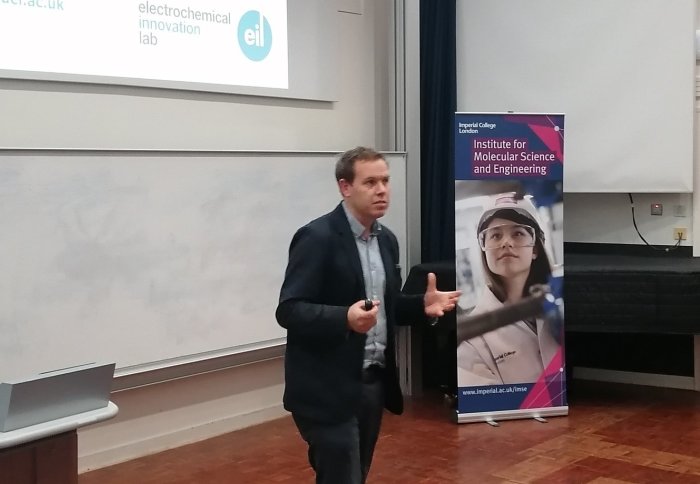The future of battery design

Professor Paul Shearing delivered the latest Institute for Molecular Science and Engineering's Highlight Seminar on the future of batteries.
Batteries transformed our lifestyles in the 20th century, and promise to do so even more in the 21st.
Since their development in the late 1970s by Sony, lithium ion batteries have revolutionised everything from our mobile phones to electric vehicles.
As the UK looks to reach net zero emissions from vehicles by 2050, batteries need to become cheaper, have higher energy density, safer, recyclable, and be made of ethically sourced materials. That is according to Professor Paul Shearing, Professor at the Department of Chemical Engineering at University College London (UCL).
Professor Shearing's group use advanced materials characterisation tools to understand how lithium ion batteries work, how they can improve their performance, and what the next generation of batteries might look like.
Designing the next generation of batteries
Lithium ion batteries are complex devices. At the electrical innovation lab at UCL, scientists are using X-ray microscopy to work out how to design better batteries by imaging them at very detailed resolutions.
X-ray microscopy can be used to image the internal composition of the battery to micrometer scales. This allows scientist and engineers to explore why batteries degrades, what limits their capacity, and eventually understand why they fail.
Using 4D microscopy allows us to better understand the structure and behaviour of batteries with time, which is the the same technology used for medical scanning. Professor Paul Shearing University College London
The major advantage of this technique is that it is non-destructive, so materials can be imaged as they change in real time. To capture every minute change in the material, a synchrotron particle accelerator, which can capture 5 million frames per second is used.
This can then provide design criteria to feed back to the scientists and engineers who make battery materials. It also allows scientists determine what micrometer scale differences in the composition of the battery has on performance and lifetime.
How batteries can fail (violently)
Another area this type of imaging can provide useful insight is the moment when batteries fail. Lithium batteries, such as those in mobile phones, very rarely fail (1 in 40 million), however when it does happen, battery failure can be very violent and fast. By using a synchrotron to image catastrophic failure of cell on very short timescales allows Paul Shearing's group to isolate where failure occurs within the battery, and come up with new designs to reduce the likelihood of battery failure. This is particularly important for new developing applications for batteries such as aerospace.
Article text (excluding photos or graphics) © Imperial College London.
Photos and graphics subject to third party copyright used with permission or © Imperial College London.
Reporter
Dr Kieran Brophy
Faculty of Engineering